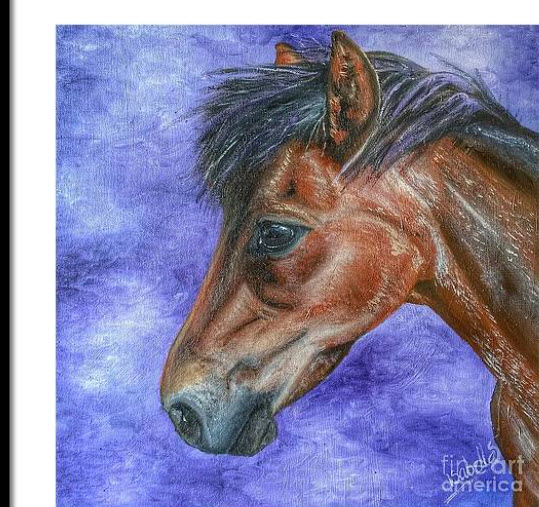One of the most common reasons we have to decline printing requests on Fine Art America is poor cropping. It’s a small detail, but it can make or break your final piece—especially if you’re planning to sell your work as prints.
Let’s take a look at this example:

At first glance, this is a beautiful and well-rendered painting of a horse. The detail, colour, and brushwork are all excellent. However, the composition has been significantly let down by the crop.
The image cuts off the horse’s neck awkwardly, creating a sense of abruptness and imbalance. There’s no room for the subject to “breathe”. The eye is immediately drawn to what is missing, rather than what is present. This sort of cropping mistake not only detracts from the visual flow of the artwork—it makes it unsuitable for professional printing.
Why cropping matters
-
Balance and Composition
Cropping influences how the eye moves through a piece. A poor crop can unbalance your work, pulling the viewer’s focus to the wrong area. -
Framing and Edges
When an image is cropped too tightly or unevenly, it can make framing difficult or result in parts of the artwork being cut off during production. -
Print Quality
Printing requires precision. If your crop doesn’t match standard ratios (e.g., 4:5, 2:3), you may lose critical parts of your image during automatic resizing.
Tips for Better Cropping
-
Always leave space around your subject. Think of it as giving your artwork “elbow room”.
-
Double-check aspect ratios. Most print sizes follow standard proportions.
-
Use mock-up tools or preview options before submitting. If it doesn’t look right in the preview, it won’t print right.
-
Avoid cutting through joints, faces, or central elements.
-
Consider composition guidelines like the rule of thirds or golden ratio when framing your work.
Before You Upload
Make sure your piece is not just beautiful—but ready. A well-cropped image shows professionalism and care. If you’re unsure, ask someone to look it over or reach out for feedback. A second pair of eyes might spot something you missed.
Remember: cropping isn’t just a technical step—it’s a part of your artistic expression.

Homepage › Forums › Let’s Talk Cropping